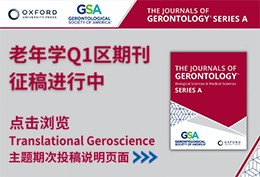-
Synthesis and thermodynamic data of acetate-containing giorgiosite – a novel hydrated magnesium carbonate Cem. Concr. Res. (IF 13.1) Pub Date : 2025-04-21 Hoang Nguyen, Ellina Bernard, Frank Winnefeld, Barbara Lothenbach, Paivo Kinnunen
Organic additives play important roles in enhancing the formation of Mg‑carbonates and reaction kinetics in MgO-based cements. However, little is known about the influences of organics on the formation pathways of carbonate phases and whether organo-modified Mg‑carbonates exist. We found that acetate can be involved in the formation of a new hydrated magnesium carbonate phase containing acetate: [Mg5(CO3)3
-
Characterization and analysis of the self-healing behavior of alkali-activated slag mortar Cement Concrete Comp. (IF 13.1) Pub Date : 2025-04-20 Yanshuai Wang, Hao Ye, Rongxin Peng, Xiangping Xian, Shuxian Hong
Alkali-activated slag (AAS) mortar has substantial limitations owing to its autogenous shrinkage, which leads to crack formation, and the self-healing property presents a promising solution to maintain its integrity and durability. Based on this, the self-healing efficiency of AAS mortar under a stable alkaline environment was assessed, with exogenous calcium ions introduced via a Ca(OH)2 solution
-
Effect of TiO2/montmorillonite on the photocatalytic and mechanical properties of cementitious materials Cement Concrete Comp. (IF 13.1) Pub Date : 2025-04-20 Junjie Zhang, Yuzhe Li, Hongbo Tan
The poor dispersion of nano-TiO2 adversely affects the photocatalytic performance of photocatalytic cementitious materials (PCMs). In this study, a supported composite photocatalyst TiO2/montmorillonite (TiO2/Mt) was employed to prepare PCMs, aiming to improve the dispersion behavior of nano-TiO2. The impact of TiO2/Mt on the photocatalytic and mechanical properties of cementitious materials was also
-
Time dependence of corrosion resistance in belitic calcium sulfoaluminate (BCSA) cement concrete Cement Concrete Comp. (IF 13.1) Pub Date : 2025-04-20 Tayyab Adnan, Éric P. Bescher, Robert J. Thomas
This paper studies the time dependence of corrosion resistance in belitic calcium sulfoaluminate (BCSA) cement concrete. BCSA is a hydraulic cement that sets rapidly and has a lower carbon footprint than portland cement (PC). Some studies suggest that BCSA concrete is highly susceptible to chloride-induced corrosion, but these claims are based on testing at 28 days. No later-age results have been reported
-
Cover Image, Volume 40, Issue 11 Comput. Aided Civ. Infrastruct. Eng. (IF 9.1) Pub Date : 2025-04-20
-
Cover Image, Volume 40, Issue 11 Comput. Aided Civ. Infrastruct. Eng. (IF 9.1) Pub Date : 2025-04-20
-
Issue Information Comput. Aided Civ. Infrastruct. Eng. (IF 9.1) Pub Date : 2025-04-20
Click on the article title to read more.
-
Estimation of Young's modulus and compressive strength of cement using a solitary wave in granular crystals Cem. Concr. Res. (IF 13.1) Pub Date : 2025-04-19 Ahmed Z. Alkhaffaf, Sangyoung Yoon, Andreas Schiffer, Tadahiro Kishida, Chan Yeob Yeun, Tae-Yeon Kim
This study presents an in-depth examination of the sensitivity of highly nonlinear solitary waves (HNSWs) to variations in the curing period, the water-to-cement (w/c) ratio, and the mechanical properties of cement. Experimental results verify that the travel times and amplitude ratios of the HNSWs are highly sensitive to changes in curing time of 1 to 28 days, the w/c ratio of 0.3 to 0.6, the elastic
-
Three‐dimensional morphological analysis of Chang'e‐5 lunar soil using deep learning‐automated segmentation on computed tomography scans Comput. Aided Civ. Infrastruct. Eng. (IF 9.1) Pub Date : 2025-04-19 Siqi Zhou, Yu Jiang, Xinyang Tao, Feng Li, Chi Zhang, Wei Yang, Yangming Gao
Grain morphology is a fundamental characteristic of lunar soil that influences its mechanical properties, sintering behavior, and in situ resource utilization. However, traditional two‐dimensional imaging methods are time‐consuming and lack full three‐dimensional (3D) structural information. This study presents an automated deep learning‐based segmentation and reconstruction algorithm for high‐resolution
-
Predicting pavement cracking performance using laser scanning and geocomplexity‐enhanced machine learning Comput. Aided Civ. Infrastruct. Eng. (IF 9.1) Pub Date : 2025-04-19 Chunjiang Chen, Yongze Song, Wenbo Lv, Ammar Shemery, Keith Hampson, Wen Yi, Yun Zhong, Peng Wu
Transport infrastructure is vulnerable to crack formation and deterioration due to aging and repetitive loading. Accurate and timely crack assessment and prediction are crucial for effective road maintenance, but existing studies often rely on individual indicators such as crack types, attributes, and severity, which fail to capture the full complexity of crack deterioration. Furthermore, limited research
-
Parameter identification in prestressed concrete beams by incremental beam–column equation and physics‐informed neural networks Comput. Aided Civ. Infrastruct. Eng. (IF 9.1) Pub Date : 2025-04-19 Yifan Yang, Zengwei Guo, Zhiyuan Liu
This paper explores a novel methodology for identifying prestress force (and bending rigidity) from the perspective of static deflection methods and derives an incremental beam–column equation (iBCE) by elucidating the mechanisms underlying the long‐ and short‐term behaviors, with particular emphasis on a physical system that disregards long‐term deflections, including self‐weight and equivalent lateral
-
A hybrid machine learning framework for wind pressure prediction on buildings with constrained sensor networks Comput. Aided Civ. Infrastruct. Eng. (IF 9.1) Pub Date : 2025-04-19 Foad Mohajeri Nav, Seyedeh Fatemeh Mirfakhar, Reda Snaiki
Accurate and efficient prediction of wind pressure distributions on high‐rise building façades is crucial for mitigating structural risks in urban environments. Conventional approaches rely on extensive sensor networks, often hindered by cost, accessibility, and architectural limitations. This study proposes a novel hybrid machine learning (ML) framework that reconstructs high‐fidelity wind pressure
-
Seismic performance of innovative precast dry and strong beam-column connection J. Build. Eng. (IF 7.4) Pub Date : 2025-04-19 Wei Zhang, Seonhoon Kim, Deuckhang (DK) Lee, Hyunjin Ju, Lizhao Dai, Lei Wang
This study presents a novel precast beam-column connection system featured with high constructability, stability during construction, and also fast-built construction by utilizing dry connection details. To examine its emulative seismic performance, a precast concrete (PC) beam-column connection specimen with strong connection details and a corresponding reinforced concrete (RC) control specimen with
-
Insights on solid CO2 mixing method for hybrid alkaline cement (HAC): performance, sustainability, and experimental system improvement Cement Concrete Comp. (IF 13.1) Pub Date : 2025-04-18 Yi-Sheng Wang, Runsheng Lin, Xiao-Yong Wang
New low-carbon concrete materials and technologies are urgently needed to reduce CO2 emissions and achieve sustainable development in the cement industry. Hybrid alkaline cement (HAC) is a new cement-based material that combines the advantages of ordinary Portland cement and alkali-activated cement. This study introduces a solid CO2 mixing method and investigated its impact on the performance and sustainability
-
Robust skeleton-based AI for automatic multi-person fall detection on construction sites with occlusions Autom. Constr. (IF 11.5) Pub Date : 2025-04-18 Doil Kim, Xiaoqun Yu, Shuping Xiong
Rapid and accurate automatic fall detection is essential for improving worker safety and reducing the severity of fall-related incidents on construction sites. To address the challenges of real-time detection in complex and obstructed construction environments, this paper develops a specialized dataset for fall scenarios and introduces a skeleton-based AI model called YOSAP-LSTM. This model integrates
-
Intelligent design and evaluation of tunnel support structure systems Autom. Constr. (IF 11.5) Pub Date : 2025-04-18 Ziquan Chen, Chuan He, Zihan Zhou, Xuefu Zhang, Yuanfu Zhou, Fenglei Han, Wei Meng
With the rapid development of artificial intelligence, intelligent algorithms for parameter nonlinear mapping provide a new design approach to address the long-term reliance on empirical design in tunnel engineering. This paper proposes an intelligent model for predicting support structure parameters based on tunnel background information. After comparing the characteristics of machine learning and
-
Transformer-based time-series GAN for data augmentation in bridge digital twins Autom. Constr. (IF 11.5) Pub Date : 2025-04-18 Vahid Mousavi, Maria Rashidi, Shayan Ghazimoghadam, Masoud Mohammadi, Bijan Samali, Joshua Devitt
Recent advancements in AI-based Digital Twins (DTs) have substantially influenced bridge monitoring and maintenance, especially through Deep Learning (DL) for sensor-based damage detection. However, the effectiveness of DL models is constrained by the extensive training data they require, which is often costly and time-consuming to collect in bridge infrastructure contexts. To address this data scarcity
-
Personalized construction safety training system using conversational AI in virtual reality Autom. Constr. (IF 11.5) Pub Date : 2025-04-18 Aqsa Sabir, Rahat Hussain, Akeem Pedro, Chansik Park
Training workers in safety protocols is crucial for mitigating job site hazards, yet traditional methods often fall short. This paper explores integrating virtual reality (VR) and large language models (LLMs) into iSafeTrainer, an AI-powered safety training system. The system allows trainees to engage with trade-specific content tailored to their expertise level in a third-person perspective in a non-immersive
-
Bridge scour morphology identification and reconstruction using 3D sonar point cloud data Autom. Constr. (IF 11.5) Pub Date : 2025-04-18 Zelin Huang, Yanjie Zhu, Wen Xiong, C.S. Cai
3D multibeam sonar is a feasible solution for detecting bridge scour. However, the reliance on technicians for the identification of the morphological characteristics of local scour pits is time-consuming and subjective, and the absence of surface data hinders scour morphology analysis. Hence, an algorithm is proposed for the unsupervised identification and precise reconstruction of bridge scour morphology
-
Augmented Reality-based construction site management using optimized BIM and project schedule integration Autom. Constr. (IF 11.5) Pub Date : 2025-04-18 Sanyukta Arvikar, Pa Pa Win Aung, Gichun Cha, Seunghee Park
The construction industry has experienced significant transformation with the adoption of Building Information Modeling (BIM) technology, which provides a virtual representation of both the physical and functional components of construction projects. In this context, project scheduling becomes a vital tool for site managers to assess construction progress. This paper introduces an augmented reality
-
Ontology for holistic building performance modeling and analysis Autom. Constr. (IF 11.5) Pub Date : 2025-04-18 Duygu Utkucu, Rafael Sacks
Building performance modeling and analysis using Building Information Modeling (BIM) platforms remains fragmented, requiring various software applications to address different disciplines. Challenges in data extraction, transfer, and integration arise due to inconsistencies in vendor-specific data schemas and limited interoperability. Moreover, OpenBIM data schemas lack comprehensive object definitions
-
A state-of-the-art review on failure mechanisms in buried plastic pipes Tunn. Undergr. Space Technol. (IF 7.4) Pub Date : 2025-04-18 Seyed M. Yadollahi, Kalyan R. Piratla
Plastic pipes have become the primary material of choice for underground infrastructure, including water, gas, and sewer systems, due to their corrosion resistance, lightweight properties, and cost-effectiveness. However, despite their promising long design life, plastic pipes are relatively new compared to traditional materials, and limited empirical data exist on their long-term failure modes. To
-
Practical approach for estimating disc cutter wear in sand-pebble-mudstone composite geomaterials: A case study Tunn. Undergr. Space Technol. (IF 7.4) Pub Date : 2025-04-18 Yingjie Wei, Yong Zeng, Guifeng Zheng, Khalid Elbaz, Yuxin Jie
Under complex geological conditions, disc cutter wear in tunneling is inevitable, and excessive wear poses risks to construction safety and efficiency. This study presents a case analysis of disc cutter wear in the earth pressure balance shield (EPBS) employed in Chengdu Metro Line 18 Phase III, examining geological conditions, wear morphologies, and the relationship between driving parameters and
-
Physics-based seismic fragility analysis of ductile iron pipeline with push-on joints considering uncertainties of joint mechanical properties Tunn. Undergr. Space Technol. (IF 7.4) Pub Date : 2025-04-18 Yabo Zhang, Zilan Zhong, Jinqiang Li, Benwei Hou, M.Hesham El Naggar, Chengshun Xu
The nonlinear mechanical behaviour of pipeline joints influences the seismic response of water supply pipelines. This study presents an experimental investigation of the tensile behaviour of push-on joints of ductile iron (DI) pipelines, subjected to axial tensile forces and internal water pressure. The axial performance and damage states of joints are determined for push-on joints with different diameters
-
Insight into the boundary flow resistance of high-workable concrete in different states: placing and pumping Cement Concrete Comp. (IF 13.1) Pub Date : 2025-04-17 Shijun Yuan, Zhisong Xu, Tengfei Feng, Jiaping Liu
The flow resistance of modern high-workable concrete during pumping is usually considered linearly related to the flow rate, but some studies have found a non-linear relationship. An accurate assessment model of concrete flow resistance at different flow rates remains unclear. This study presents a methodology for calculating the boundary resistance of high-workable concrete based on other flow velocity
-
Automating motor grader leveling operations: Kinematic analysis for blade pose control Autom. Constr. (IF 11.5) Pub Date : 2025-04-17 Jisu Jeon, Jangho Bae, Oyoung Kwon, Yeonho Ko, Chanwoo Kim, Seonghyeon Won, Woochul Shin, Daehie Hong
Motor graders are heavy construction equipment that specialize in leveling ground surfaces. These machines adjust the blade beneath the vehicle body to perform various tasks. With the growing interest in the automation of motor grader operations, the complexity of the earthmoving mechanism and multitasking while driving degrade the efficiency and performance of these operations. Controlling the blade
-
Effect of carbon nanotubes on mechanical properties, and hydration process of face slab concrete at early ages J. Build. Eng. (IF 7.4) Pub Date : 2025-04-17 Zhifang Zhao, Jiahui Yao, Yin Bai, Chengzhuo Xie, Yubing Ouyang, Minmin Zhu, Yanming Liu, Yanxia Liu
Early-age cracking of face slab concrete (FSC) is a complex problem related to the mechanical properties and hydration process (HP), representing a critical durability concern for concrete face rockfill dam. The excellent physical and chemical properties of Carbon nanotubes (CNTs) enable their potential to mitigate early-age cracking in FSC. This study investigated the potential application of the
-
Lateral performance of traditional Chinese penetrated mortise-tenon frames: Experimental and numerical simulation J. Build. Eng. (IF 7.4) Pub Date : 2025-04-17 Leilei Liu, Xicheng Zhang, Yiwen Wu
The timber frame is the primary lateral load-resisting component in traditional Chinese timber structures. However, its limited lateral performance may lead to significant structural damage or even collapse under seismic action. Three scaled specimens of penetrated mortise-tenon frame (PMTF) were fabricated and tested under low-cyclic reversed loading to evaluate the lateral performance. This study
-
Performance of thermally activated lower-grade clays – The impact of phase composition J. Build. Eng. (IF 7.4) Pub Date : 2025-04-17 Vojtěch Pommer, Kateřina Šádková, Martin Keppert, Eva Vejmelková, Dana Koňáková
The use of supplementary cementitious materials (SCMs) in concrete production is critical for reducing the carbon footprint of the construction industry. However, the potential of lower-grade clays as SCMs has not been fully explored, and a deeper understanding of their thermal activation is needed to enhance their reactivity and performance in cementitious systems. This paper investigates the thermal
-
Bond performance between stainless steel reinforcement and seawater sea-sand geopolymer concrete J. Build. Eng. (IF 7.4) Pub Date : 2025-04-17 Qingmei Yang, Zhenhua Duan, Haifeng Yang, Junjie Mei, Fukun Li, Minghui Li
The integration of geopolymer with locally sourced seawater and sea sand offers a sustainable approach to reducing carbon emissions and alleviating material shortages in marine construction. The corrosive ions present in seawater sea-sand geopolymer concrete (SSGC) can be effectively mitigated by using stainless steel reinforcement (SSR), thereby significantly improving mechanical performance and durability
-
Seismic behavior of L-shaped precast concrete double-faced superposed shear wall with steel truss connectors J. Build. Eng. (IF 7.4) Pub Date : 2025-04-17 Qian Gu, Yupeng Ji, Jian-Fei Cheng, Yuhao Peng, Duanfeng Zhao, Zixing Ruan
This study investigates the seismic behavior of L-shaped precast concrete double-faced superposed shear walls (PCDSSWs) through both experimental and numerical analyses. A full-scale quasi-static cyclic test was conducted on an L-shaped PCDSSW specimen and a comparative cast-in-place specimen. A detailed finite element model was developed and validated using ABAQUS. Key variables, including axial load
-
Theoretical and experimental investigation on mortar-sprayed corrugated steel pipe under parallel-plate loading condition Tunn. Undergr. Space Technol. (IF 7.4) Pub Date : 2025-04-17 Zihao Zhu, Cong Zeng, Xuehao Wang, Qingqing Wu, Dongting Wang, Lin Hu, Baosong Ma, Peng Zhang
Mortar-spraying is currently one of the most widely used trenchless pipeline rehabilitate methods, suitable for repairing various rigid and flexible pipes. Among flexible pipes, the corrugated steel pipe (CSP) is one of the primary targets for mortar-spraying rehabilitation. Different from plain pipes, the corrugation imparts lower longitudinal stiffness and more complex mechanical behavior to CSPs
-
Stochastic seismic performance assessment of hydraulic tunnels considering oblique incoming P waves based on generalized probability density evolution method Tunn. Undergr. Space Technol. (IF 7.4) Pub Date : 2025-04-17 Benbo Sun, Yuanqi Shao, Mingjiang Deng, Jia Xu
The non-stationary and random characteristics of seismic ground motions (SGMs) are of utmost importance in seismic design and assessment. Besides, these characteristics can be amplified by the obliquely incident SGMs resulting from topographic and geological conditions, leading to unforeseen damage in underground structures. To reveal this unfavorable phenomenon, 230 non-stationary random SGMs is developed
-
Multiscale analysis on microstructural changes in hardened cement paste dried under different relative humidity levels: A comparison with cement paste containing water-dispersible polyurethane ether compound Cem. Concr. Res. (IF 13.1) Pub Date : 2025-04-16 Shingo Asamoto, Keisuke Takahashi, Naoki Sakamoto, Tokio Sampei, Kunio Matsui
This study investigated microstructural changes in hardened cement paste with and without a water-dispersible polyurethane (PU) ether compound under varying relative humidity (RH) levels. The small-angle X-ray scattering technique was used to analyse the agglomeration, piling, and densification of calcium silicate hydrate (C-S-H) units. Mercury intrusion porosimetry and water vapour sorption isotherms
-
Effect of inertia and test approach on the high-strain-rate tensile behavior of steel fiber reinforced concrete Cement Concrete Comp. (IF 13.1) Pub Date : 2025-04-16 Mohammad Bakhshi, Isabel B. Valente, Honeyeh Ramezansefat, Joaquim A.O. Barros
High strain rate loadings lead to fundamental modifications in the tensile stress-strain response of steel fiber-reinforced concrete (SFRC). These modifications include higher tensile strength and corresponding strain and fracture energy. This paper investigates the effect of strain rate on the tensile behavior of SFRC, covering ranges from quasi-static (10−6 to 10−1 s−1) to impact (10–50 s−1). For
-
Learning semantic keypoints for diverse point cloud completion Autom. Constr. (IF 11.5) Pub Date : 2025-04-16 Mingyue Dong, Ziyin Zeng, Xianwei Zheng, Jianya Gong
Raw point clouds collected from real-world scenes are sparse, incomplete and noisy, posing significant challenges for their integration into automation workflows in construction. Thus, completing plausible and fine-grained point clouds is a critical prerequisite for downstream applications. Current methods primarily focus on learning patch-level features and modeling their relationships for inferring
-
Flexural properties and damage evolution laws of scrap tire steel fiber-reinforced constructional backfill body J. Build. Eng. (IF 7.4) Pub Date : 2025-04-16 Chiyuan Che, Shenggen Cao, Yun Zhang, Changzheng Zhao, Shuyu Du, Ruiting Ma, Kaifei Wang, Yang Liu
The constructional backfill body (CBB) serves as an underground mining structure intended to form a stable void space within the goaf. However, CBB typically exhibits high brittleness and poor flexural performance. In this study, scrap tire steel fiber (SSF) was utilized to enhance the properties of CBB, and the effects of varying SSF dosages (0 %, 0.5 %, 1 %, and 1.5 %) on the three-point flexural
-
Study on cable flame spread in utility tunnel under different reverse ventilation and cable layer spacing Tunn. Undergr. Space Technol. (IF 7.4) Pub Date : 2025-04-16 Tongcheng Zhang, Xiaoshan Wang, Zhe Wang, Junyi Li, Weibin An, Feixiang Xu, Weiguang An
Through the cable flame experiment in utility tunnel, the influence law of reverse ventilation and cable layer spacing on cable flame spreading behavior in utility tunnel is studied, and the variation law of cable flame shape, flame spread rate and the highest temperature distribution in utility tunnel with the above factors is clarified. The experimental results show that, the cable flame inclination
-
Research on interpretable graph neural network agent model for siltation diagnosis in Urban-Scale sewer systems Tunn. Undergr. Space Technol. (IF 7.4) Pub Date : 2025-04-16 Junhao Wu, Ling Ma, Xi Chen, Tim Broyd
Regularly diagnosing sewer siltation (RDS) is critical for informed dredging decisions and mitigating urban overflow pollution. However, traditional sewer siltation diagnosing frameworks face two major obstacles: high detection costs and low diagnostic efficiency. This study aims to develop a diagnostic method based on readily accessible and limited data to diagnose siltation in urban sewer networks
-
A theoretical model to predict blast-induced vibration and its zoning characteristics in surrounding rock of a tunnel Tunn. Undergr. Space Technol. (IF 7.4) Pub Date : 2025-04-16 Ling Ji, Chuanbo Zhou, Nan Jiang, Xianzhong Meng
In this paper, a theoretical model for the vibration response of surrounding rock induced by a tunnel blasting is developed based on stress-wave theory and explosion characteristics of cylindrical charges. The theoretical results are validated through comparisons with simulations conducted using dynamic finite element software. Using the theoretical model, the particle vibration response of surrounding
-
Study on the mechanical performance of large-diameter shield tunnel segments with DDCI connectors Tunn. Undergr. Space Technol. (IF 7.4) Pub Date : 2025-04-16 Kai Wang, Mingqing Xiao, Sihang Ai, Yihao Pan, Jiantao Li, Zhiguo Yan
During the shield tunnel design, the joints of the lining segments are given special attention due to the relatively low strength and the risk of leakage. The stability and durability of the whole tunnel structure will significantly decrease once the joints fail, especially for large-diameter tunnels. In this paper, a new connector composed of major-D part, minor-D part, C part, I part and anchor bars
-
IoT-based retrofit information diffusion in future smart communities Energy Build. (IF 7.1) Pub Date : 2025-04-16 Lei Shu, Dong Zhao, Wanni Zhang, Han Li, Tianzhen Hong
Community-scale building retrofits are not merely scaled-up versions of single-building retrofits. They involve complex challenges, such as reconciling individual interests with collective goals and managing the dynamic interplay between buildings through mechanisms like power grids and social connections. Internet of Things (IoT) connectivity holds the potential to leverage these interplays to balance
-
Multi-objective genetic optimization of embodied and operational energy and carbon impacts of buildings in current and future scenarios Energy Build. (IF 7.1) Pub Date : 2025-04-16 Maryam Abbasi Kamazani, Manish K. Dixit, Sejal Sanjay Shanbhag
As climate change continues to pose significant challenges, redefining building design for enhanced lifecycle efficiency has become imperative. This paper investigates how different optimization objectives and varying climatic conditions shape optimal building configurations. This paper explores these performance objectives through an optimization framework that merges genetic algorithms with simulation
-
Effect of mix design factors on the self-stress-sensing behavior of metakaolin-based geopolymer Cement Concrete Comp. (IF 13.1) Pub Date : 2025-04-15 Krishnan U. Ambikakumari Sanalkumar, En-Hua Yang
The present study investigates the influence of mix design ratios on the self-sensing behavior of geopolymer pastes. The increase in silicate content, corresponding to high alkali content, leads to higher self-sensing, mechanical strength, and lower resistivity. The alterations in mix design ratios result in modifications to the ions in the pore solution and microstructure of the geopolymer, which
-
Systematic analysis of large language models for automating document-to-smart contract transformation Autom. Constr. (IF 11.5) Pub Date : 2025-04-15 Erfan Moayyed, Chimay Anumba, Azita Morteza
Fragmentation and poor collaboration in contract-heavy industries hinder innovation. While smart contracts offer promising automation for digital documents, the transformation process presents significant challenges. Current approaches are promising but are often constrained by technical limitations, domain-specific requirements, and limited flexibility, restricting widespread adoption. This paper
-
An unstructured single‐layer optimization approach for flexible right‐of‐way allocation and cooperative trajectory planning at signalized intersections Comput. Aided Civ. Infrastruct. Eng. (IF 9.1) Pub Date : 2025-04-15 Qichao Liu, Zilin Huang, Zihao Sheng, Sikai Chen
Existing methods for signal timing and vehicle trajectory coordination often rely on fixed‐phase designs or leading vehicle guidance, limiting efficiency in dynamic traffic and multi‐vehicle coordination. This study models signal timing as right‐of‐way allocation for each inbound lane at discrete time intervals and integrates trajectory planning into a mixed integer linear programming framework for
-
Interpretable physics‐informed graph neural networks for flood forecasting Comput. Aided Civ. Infrastruct. Eng. (IF 9.1) Pub Date : 2025-04-15 Mehdi Taghizadeh, Zanko Zandsalimi, Mohammad Amin Nabian, Majid Shafiee‐Jood, Negin Alemazkoor
Climate change has intensified extreme weather events, with floods causing significant socioeconomic and environmental damage. Accurate flood forecasting is crucial for disaster preparedness and risk mitigation, yet traditional hydrodynamic models, while precise, are computationally prohibitive for real‐time applications. Machine learning surrogates, such as graph neural networks (GNNs), improve efficiency
-
An ANN-GA optimization method for building clusters based on wind-induced vulnerability J. Build. Eng. (IF 7.4) Pub Date : 2025-04-15 Bo Chen, Wei Li, Linfei Jiang, Lu Zhang, Yi Hui, Qingshan Yang
Optimizing the building parameters of low/high-rise building clusters using wind-induced vulnerability (WIV) is valuable for minimizing building envelope damage losses due to strong winds and windborne debris. In general, the building parameters with the minimum WIV from typical scenarios are selected as the optimal ones. However, due to the multitude of parameter variables influencing the WIV of building
-
Effectiveness of different ventilation strategies for mitigating airborne pathogen transmission in a multi-compartment dental clinic J. Build. Eng. (IF 7.4) Pub Date : 2025-04-15 Guangpeng Yao, Huijuan Xu, Haiyang Liu, Zhijian Liu, Chuan Jiang, Wenbin Zhuang, Yabin Li, Jia Liu, Junzhou He
The potential risk of airborne cross-infection in multi-compartment dental clinics (MCDCs) requires significant attention. Ventilation systems are crucial for preventing airborne pathogens, but the data available for MCDCs are still inadequate. Therefore, this study evaluated the ventilation performance under different ventilation strategies in an MCDC, including different ventilation modes, the relative
-
Plastic design for knee braced steel frame using performance and mechanism control J. Build. Eng. (IF 7.4) Pub Date : 2025-04-15 Yanjing Fan, Shaoping Wan, Jianrong Pan, Zhaoqi Xie
The knee braced steel frame (KBSF) has seen widespread application in practical engineering due to its minimal spatial requirements and ease of assembly. However, the absence of key research findings regarding the synergistic between knee braces and joints has hindered the accurate calculation of the stress state in structural components. This limitation makes a challenge for the better seismic performance
-
Experimental investigation on some influencing factors of the lateral resistant behavior of wood infill walls in traditional timber frames J. Build. Eng. (IF 7.4) Pub Date : 2025-04-15 Weijie Lu, Hongxing Qiu, Xin Zhan, Ting Li, Frank Lam
Timber frames with wood infill walls are common lateral load resisting systems in traditional timber structures. There has been much research on timber frames with different infill types, which confirmed the crucial role of infill walls on the seismic response of frames. However, the influencing factors of the lateral performance of wood infill walls are less understood. Monotonic tests were conducted
-
Regulating the in-situ foaming behaviour of ferric oxyhydroxides in red mud by controlling firing atmosphere J. Build. Eng. (IF 7.4) Pub Date : 2025-04-15 Pei Tang, Shaofei Guo, Tengfei Deng, Shicheng Jiang, Wei Chen
This study investigates a method to regulate the in-situ foaming behaviour of hematite in red mud by controlling the firing atmosphere. The effects of the atmosphere on iron valence states, phase evolution, pore structure, and mechanical properties were systematically investigated. Results demonstrate that compared to air, a N2 atmosphere significantly accelerated the Fe2O3-FeO transformation, increasing
-
New insights of ordered packing bricks-like structure in 3-aminopropyltriethoxysilane modified calcium silicate hydrate systems J. Build. Eng. (IF 7.4) Pub Date : 2025-04-15 Zheyu Zhu, Kai Wu, Zhongping Wang, Linglin Xu, Yue Zhou, Geert De Schutter
The natural shell structure shows organic matter regulating nano-grain ordered orientation boosts inorganic material toughness. The potential strategy to enhance the toughness of cement involves tailoring the ordered packing of calcium silicate hydrate (C–S–H). However, the mechanism to achieve ordered packing of C–S–H is still limited. Here, we report a method to modify the self-assembly pathway by
-
Acid effect on permeable polymer concrete containing different resin and aggregate types J. Build. Eng. (IF 7.4) Pub Date : 2025-04-15 Abdurrahim Emre Özdemir, Serdal Ünal, Arda Büyüksungur, Mehmet Canbaz
Degradation of permeable concretes due to chemical effects under outdoor conditions is one of the most important problems affecting permeability. In this study, resin-based binders were used as an alternative solution to this problem and permeable concretes with sustainable performance were obtained. Resin-based binders offer an alternative to traditional cementitious materials in acidic and coastal
-
A sustainable cement-based composite with self-cleaning and enhanced technical properties: Role of olive pomace and Nano-TiO2 J. Build. Eng. (IF 7.4) Pub Date : 2025-04-15 Şevket Onur Kalkan, Ahmet Yavaş, Saadet Güler, Lütfullah Gündüz
The development of sustainable and eco-friendly building materials is imperative to reduce environmental impacts and improve structural efficiency. This study presents an innovative cement-based composite incorporating olive pomace, a bio-admixture derived from agricultural waste, and nano-TiO2, a nanomaterial known for its photocatalytic properties. The synergistic effects of these two admixtures
-
Initial plastic shrinkage of 3D-printed concrete incorporating recycled brick fine aggregates: Insights from water transport and structural evolution J. Build. Eng. (IF 7.4) Pub Date : 2025-04-15 Lutao Jia, Enlai Dong, Kailun Xia, Geng Niu, Zijian Jia, Hanquan Yuan, Yueyi Gao, Yamei Zhang
Due to factors such as low water-to-cement ratio, high cement content, absence of formwork, and high surface area-to-volume ratio, 3D-printed concrete (3DPC) is prone to early plastic shrinkage and cracking, posing risks to mechanical properties and long-term durability. This paper investigated the influence of substituting natural river sand with recycled brick fine aggregates (RBFA) on the performance
-
A critical success factor (CSF) framework for implementing net-positive housing in the water, energy, food, environment (WEFE) Nexus: Insights from Jordan and South Africa J. Build. Eng. (IF 7.4) Pub Date : 2025-04-15 Victoria Andrea Cotella, Rania Aburamadan, Ala Erekat, Ciprian Daniel Neagu, Ali Shehadeh, Alireza Moghayedi, Iqbal M. Mujtaba
Addressing the specific challenges faced by low-income communities, such as poor housing conditions, is crucial while simultaneously working toward global sustainability goals, including net-zero emissions and climate change mitigation. This study explores the Critical Success Factors (CSFs) influencing the Water, Energy, Food, and Environment (WEFE) nexus within the Sustainable, Innovative, Affordable
-
Evaluation of the seismic performance of prestressed precast coupled walls with friction coupling beams: experiments and theoretical behaviors J. Build. Eng. (IF 7.4) Pub Date : 2025-04-15 Yong Zhao, Jingwei Gao, Yong Zhang, Bin Zeng, Chun-Lin Wang
The improvement of seismic toughness is one of research focuses on coupled shear walls. In this paper, a prestressed precast coupled wall with friction coupling beams (PPCW-FCB) was assembled, in which the prestressed tendons mainly provided lateral resistance and self-centering capability, and the friction coupling beams (FCB) provided energy dissipation capacity. Based on the quasi-static tests of
-
Force transfer mechanism and shear performance of perfobond strip connector encased in UHPC J. Build. Eng. (IF 7.4) Pub Date : 2025-04-15 Xia Yang, Cheng-shuo Han, Jun-jie He, Yong-jian Zhou, Jie Wu
This study aims to investigate the load-transfer mechanism of Perfobond Leiste (PBL) shear connectors between ultra-high performance concrete (UHPC) slabs and steel beams. Twelve standard push-out specimens were designed and tested to examine the effects of the number of holes, hole spacing, steel fiber content, and perforating rebar diameter on the shear performance of PBLs. The failure modes, load-slip
-
Flexural capacity of concrete beams reinforced by different types of polypropylene fibers and FRP bars J. Build. Eng. (IF 7.4) Pub Date : 2025-04-15 Zhiyi Tang, Xiongjun He, Bingyan Wei, Huayi Wang, Ming Zhou, Chao Wu
The application of basalt fiber reinforced polymer (BFRP) and carbon fiber reinforced polymer (CFRP) reinforcements offers benefits such as high strength, excellent corrosion resistance, and eco-friendliness, making it a focal point in architectural advancements. The integration of polypropylene fiber (PPF) enhances the crack resistance of reinforced concrete (RC) beams and fiber-reinforced polymer















 京公网安备 11010802027423号
京公网安备 11010802027423号